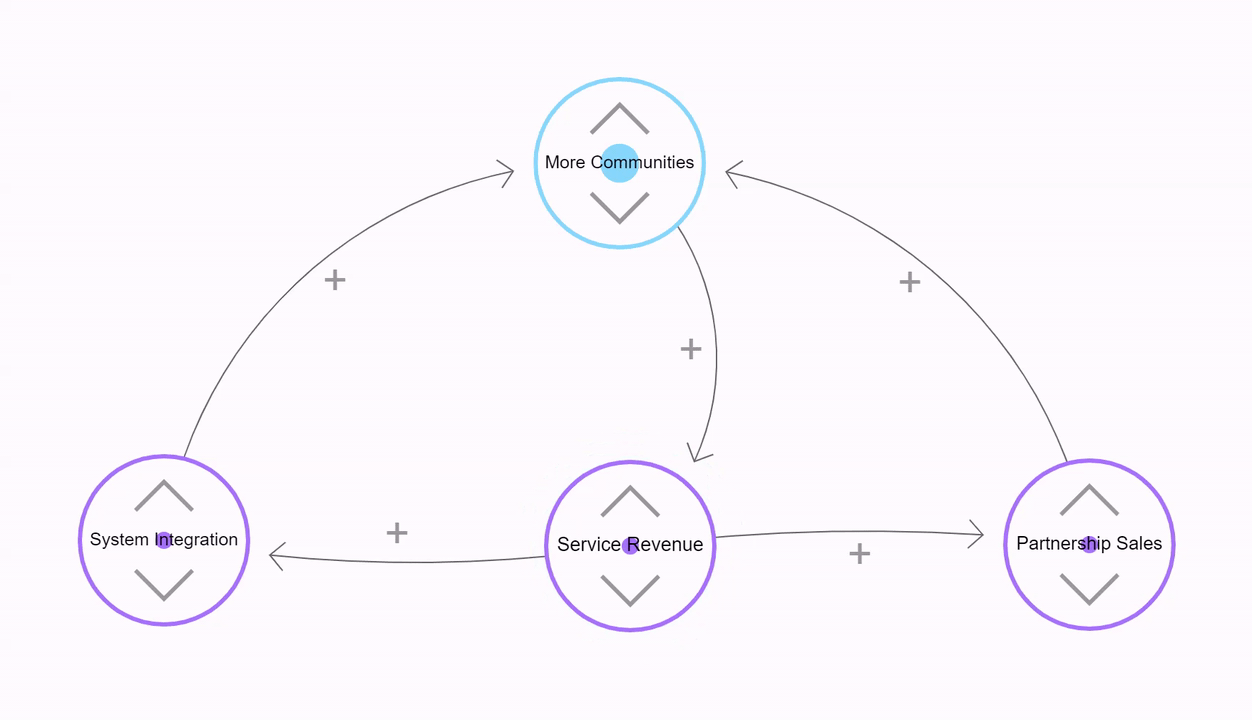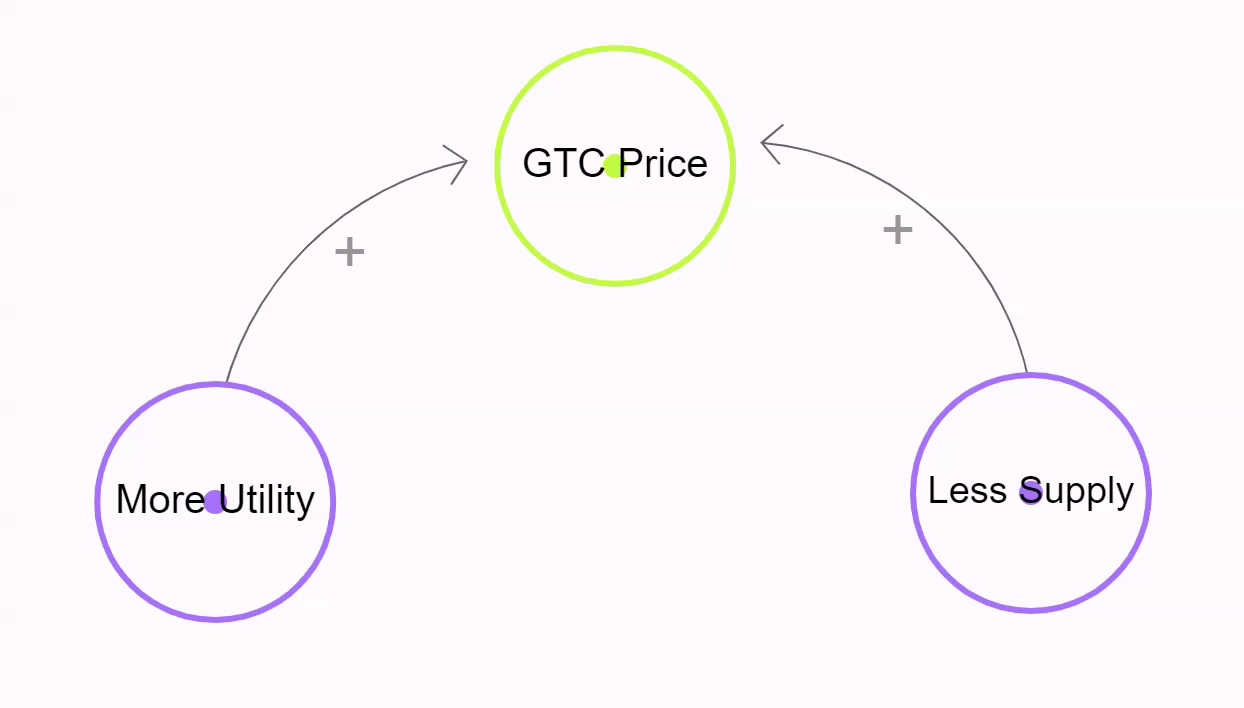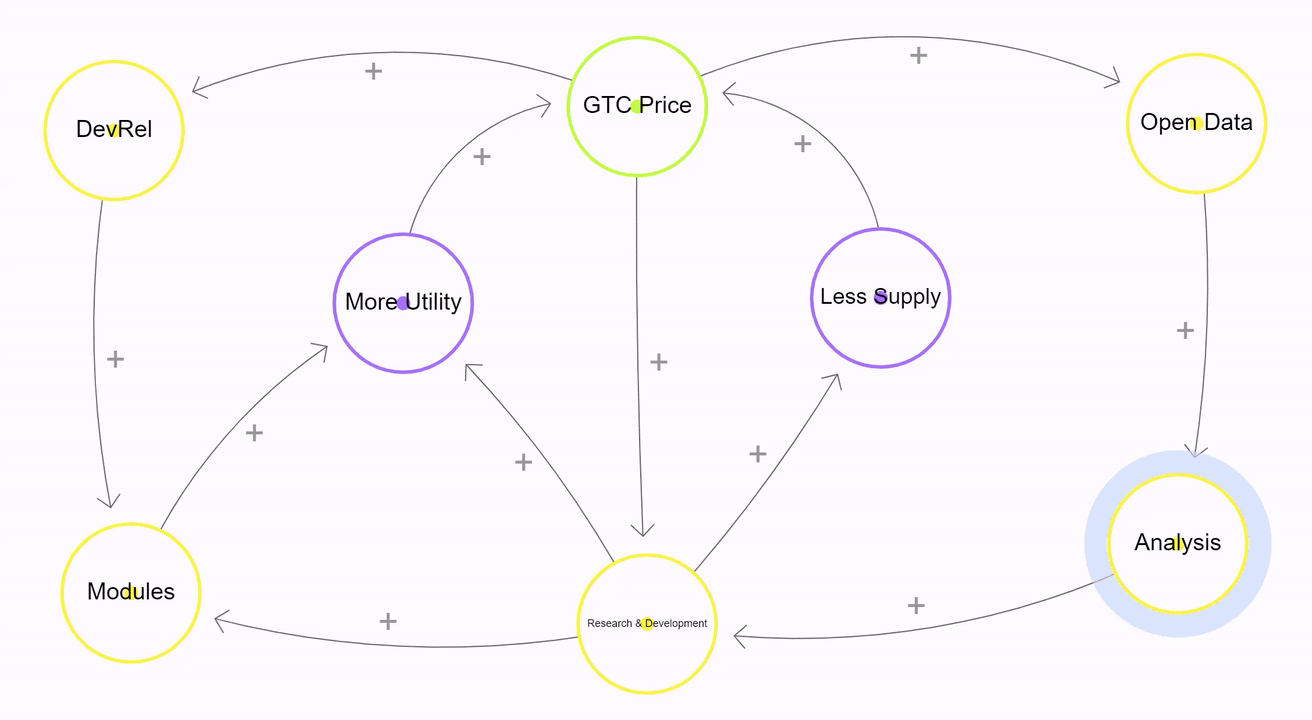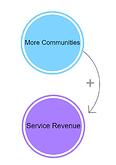The new grants protocol will launch over the next 2-6 months in staged beta & alpha launches. Once this publicly available infrastructure is released, the responsibilities of Gitcoin will change. This post is designed to think through the critical activities of the DAO after the launch. A clear view of a desired future state can help us align our efforts before and during the launch.
Here are a few key questions which must be answered to understand the flywheel which will drive us to our goal of helping communities to fund their shared needs.
- What does grants protocol provide which other funding mechanisms do not?
- What is the flywheel that will support maintenance and improvements for the grants infrastructure?
- How might we accelerate the pace at which we approach our optimally allocated capital future?
The High Level Flywheel
Getting more communities onboard is the one thing we can control right now.

Now how can we increase the speed of this flywheel? Here are the levers I have identified.
More Communities
Increasing the total number of communities using the grants protocol to fund their shared needs. By extension, this increases the number of voters & users on the protocol.
- Service Sales
- Partnership Marketing
- Systems Integrations
Shared Learning & Tools
Empowering and enhancing the community to interact with the grants software, run grants rounds, and continuously iterate on their funding stack using learnings from the ecosystem.
- Developer Relations
- Forking the Protocol
- Decentralized storage
- Smart contracts
- Forking the User Interface
- Grant Explorer
- Grant Hub
- Passport,
- Round Manager
- Building Modules to Integrate
- Sybil Resistance & Identity
- Scaling Grant Eligibility Reviews
- Dispute & Appeals Judgment
- Payout Calculation & Release
- Forking the Protocol
- Open Data Community
- Data Infrastructure
- Accessibility
- Reproducibility
- App Composability
- Data Analysis
- Fund Distribution
- Preventative Sybil Defense
- Reactive Sybil Mitigation
- Grant Eligibility
- Reviewer Trust
- Data Infrastructure
- Directed Research & Development
- Scoring Model Efficacy
- Sybil detection
- Trust Bonus
- Personhood Score
- Grant Eligibility
- Reviewer Trust Rating
- Community Trust Rating
- Mechanism Design
- GTC Utility
- Ecosystem Sustainability
- Funding mechanisms
- Community Direction
- Identify High Potential Experiments
- Scoring Model Efficacy Research
- Mechanism Design Research
- Prioritized Analysis Backlogs
- Prioritized Development Backlogs
- Identify High Potential Experiments
- Scoring Model Efficacy
Better Capital Allocation
Actively increasing the rate at which we move towards our goal state.
- Communications
- Round Owners
- Matching Pool Funders
- Grantees
- Voters
- DevRel
- DataRel
- DAO contributors
- Protocol Maintenance
- Product Maintenance
- Key Module Building & Maintenance
Legitimacy
Verifiable and reproducible results. Being able to support high-resolution democratic decisions which more accurately reflect the desires of the communities which participate.
- High Quality Partners
- Brand Positioning
- Impact Certificates
How do we create sustainability in the mechanism?
More Communities
We know that more communities means more opportunities to upsell services.
Now we must figure out how we can sustainably increase the number of communities.
This can be done by using service revenue to pay for partnership marketing and systems integration support.

Now the question becomes, why would anyone want to do this before there are any customers? Upsells! Gitcoin should provide a basic level of service via it’s PGF stream. Either the PGF stream or a new entity could provide upsells including grant eligibility reviews, customized sybil defense and/or marketing help.
Ideally, this becomes sustainably profitable such that a competitive market emerges where ROUND OWNERS solicit donations from MATCHING POOL FUNDERS and hire ROUND OPERATORS to facilitate the round’s execution.
Shared Learnings & Tools
This area has the highest risk for failure and the most opportunity within our control.
As public goods for the entire Gitcoin ecosystem, the shared learnings and tools must be funded by the DAO to start and eventually be sustained via mechanism design. The learnings and tools needed for communities to optimally allocate capitol must exist and be understood before this is no longer needed.
Our product as Gitcoin DAO is NOT the grants protocol. Our product is the continuous improvement of a community’s ability to fund their shared needs!
Until the day when you see a pothole and think, “That is weird… the government never messes up how they fund our shared needs”, there is still a need for Gitcoin.
Now let’s dive into the sustainability of this function. As public goods funded by the DAO, we will need to see the token price increase to maintain the stability of this function.
Here we can see that you can lower the supply of GTC or increase it’s utility to positively affect the price of the asset.

Increasing GTC Utility
To increase the utility of GTC we will need to run experiments to understand which mechanisms people will use and how well they produce their intended effects. Identity staking, grant staking, and even betting on future impact are all potential use cases.
To increase our odds of success, we can harness the community’s intelligence using crowdsourced analytics to drive research and development decisions. DevRel efforts will make it easier to access talent needed to build a backlog of modules decided to be the highest potential builds for increasing the utility of GTC while accomplishing their primary objective.
Decreasing GTC Supply
A continually decreasing supply of GTC can be made sustainable by that grants rounds in the Gitcoin ecosystem pay back to the system. One way to do this is by creating a norm to include a grant in every grant round that is used to buy and burn GTC.
Additionally, building modules which help a round operator to better allocate the costs as desired between voters, grantees, and matching fund donors could also increase the odds of success.
This sustainable flywheel might look like this.

Better Capitol Allocation
When we learn about a new permutation of the funding stack that works well, it will need to be communicated to the community at large. Continuously engaged stakeholder groups are crucial to our ability to do this.
Hub & Spoke Network Effect
Our network effect will largely be built as a hub and spoke model. Think about the publications and authors on Medium. The advantage of being in the Gitcoin ecosystem is that you can benefit from the shared learnings which come from other rounds. Like Medium, our distribution introduces users of one community to other communities they might enjoy. It encourages the publications (communities) to better serve their readers (voters) and writers (grantees). They do this by continually refining their funding stack utilizing shared learnings and tools.
Ecosystem vs Community Participation
We might think of the broader Gitcoin ecosystem to include anyone who is building on or forking the grants protocol. The Gitcoin community is likely to be defined more narrowly. I might suggest those who are willing to stake to be a part of it.
Defining the Gitcoin community could be a great utility use case for GTC. Voters can stake GTC AND be asked to use it in a module that secures the system. Round owners can create burn grants to pay for their part of the public good services. Grantees can stake on their reputation!
Legitimacy
This is the easiest one. It mostly comes as a by-product of the others. If more communities choose to share their learnings and tools to support the Gitcoin ecosystem, then capital will be allocated better for any community using gitcoin grants protocol.
Conclusion
As Gitcoin moves towards our protocol launch, we need to think deeply about sustainability. We need to assess which levers have the highest impact. We need to get thoughts like these into the open to be discussed and debated.
@Owocki has passed the torch to a decentralized group of regens. We need to continue to articulate our vision for it to manifest.
PS. This is my take expanding on The Grants 2.0 Flywheel ♻️
